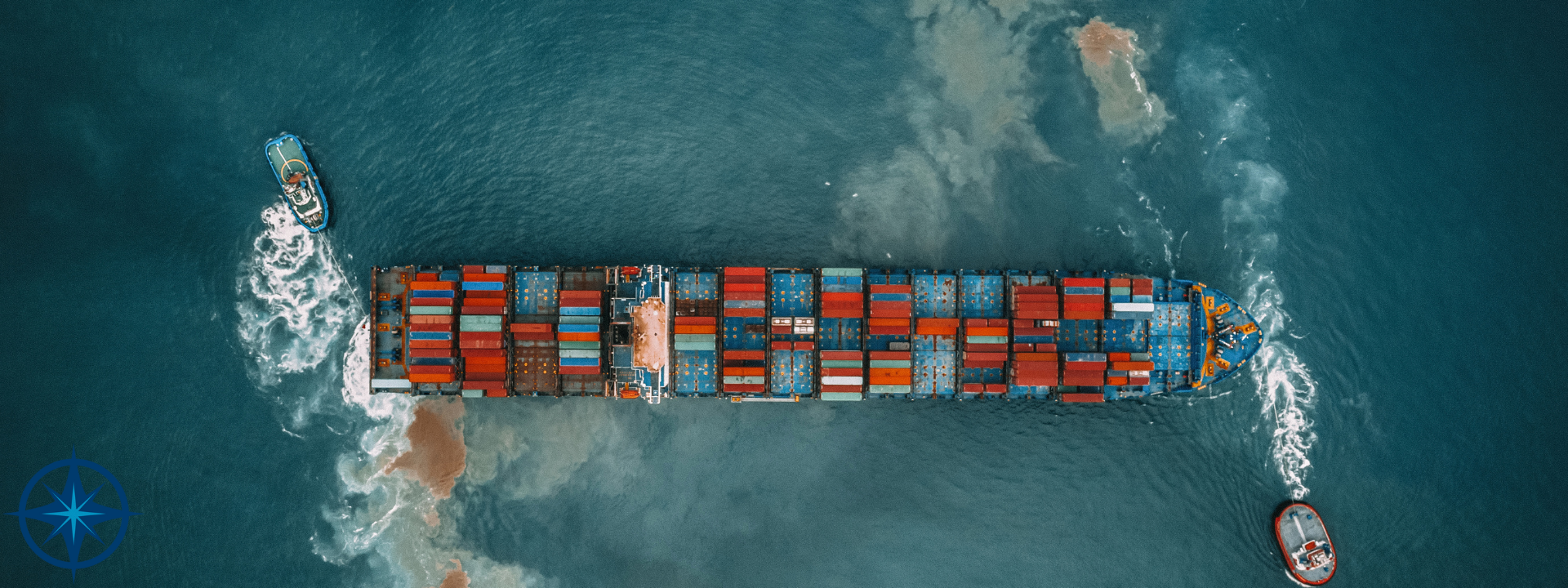
What Reporting Mechanisms Exist to Ensure Shipping Reduces its Emissions?
In 2022 international shipping accounted for about 2% of all global energy-related CO2 emissions so clearly something has to be done to reduce this.
The European Union Emissions Trading System (EU ETS) is a cap and trade system designed to reduce greenhouse gas emissions within the European Union. It came into force for the shipping industry at the beginning of 2024 and is a fundamental shift in the way sustainability is being approached in the maritime sector.
Large vessels must record, verify and report on emissions when calling at an EU port. From 2025, shipping companies are required to offset the applicable CO2 voyage emissions through the purchase of an equivalent number of EU Allowances (EUAs).
Operators must surrender enough allowances to fully account for their emissions as failure to do so will result in heavy fines. This is adding a heavy administrative burden to an already regulatory intense industry and ship owners are concerned that they may fall foul of the system due to the unpredictability of their fuel requirements.
In addition, the huge fluctuation in carbon prices during the initial trial phases has meant that ship operators are worried that continued volatility will make it difficult for them to set budgets as charter costs could unexpectedly increase.
However, smart operators have invested in IT systems and AI driven data analysis tools to improve journey plans and use fuel more efficiently hence cutting CO2 emissions which is the reason that the EU ETS system was introduced in the first place.
Through vessel performance monitoring major fuel consumption contributors such as the hull, machinery, speed, route and weather conditions can be tracked and refined accordingly to reduce overall usage.
Ship operators need to take a proactive approach to this new regulatory challenge rather than bury their heads in the sand. By leveraging new technology, the industry can reduce carbon emissions which is not only good for the planet but it will also save ship operators money as they will be using less fuel.
In addition, from 1 January 2023 it became mandatory for all ships to calculate their attained Energy Efficiency Existing Ship Index (EEXI) to measure their energy efficiency and to initiate the collection of data for the reporting of their annual operational carbon intensity indicator (CII) and CII rating. This has been introduced to act as a stimulus to reduce carbon emissions in shipping by 40% by 2030 compared with a 2008 baseline. This target was set by the International Maritime Organisation (IMO) with the overall ambition to reach net-zero emissions by 2050.
IMO’s Marine Environment Protection Committee (MEPC) will regularly review the effectiveness of both systems implementation by the industry and will amend if required.
Clearly new fuels will be integral to reducing GHG emissions and the industry is working on developing lower emission and carbon free fuels.
Some of the front runners in this arena are:
Hydrogen: Green hydrogen, produced through electrolysis powered by renewable energy sources, is gaining attention as a potential carbon-free fuel for the maritime sector. Hydrogen can be used in fuel cells to generate electricity for propulsion.
Ammonia: Ammonia is being considered as a carbon-free fuel due to its potential to be produced using renewable energy sources. It can be used directly in combustion engines or as a hydrogen carrier for fuel cells.
Biofuels: Advanced biofuels derived from sustainable feedstocks, such as algae or waste materials, are being explored as alternatives to traditional fossil fuels. These biofuels can be used in existing engines with minimal modifications.
Liquefied Natural Gas (LNG): While LNG is not entirely carbon-free, it is considered a cleaner alternative to traditional marine fuels. Research is ongoing to develop technologies for carbon capture and storage (CCS) to mitigate the emissions associated with LNG.
Electric Propulsion: Battery-electric propulsion systems are being developed for smaller vessels and short-distance routes. Larger ships are exploring hybrid solutions with batteries or fuel cells combined with traditional fuels.
Methanol: Methanol is being investigated as a potential marine fuel, and efforts are underway to produce “green” methanol using renewable energy sources.
Synthetic Fuels: Synthetic fuels, also known as e-fuels or electrofuels, are produced by combining hydrogen with carbon dioxide captured from the atmosphere or industrial processes. These fuels can be used in existing internal combustion engines.
Wind-Assisted Propulsion: Wind-assisted propulsion technologies, such as sail-assist or rotor sails, are being incorporated into ships to harness wind energy and reduce reliance on traditional fuels.
Collaboration and transparency is key here but ship operators are notably very secretive due to the highly competitive nature of the market however in order to achieve real change a fundamental shift in this siloed approach is necessary to not only reach the IMO’s targets but also create a sustainable industry and planet for future generations.

